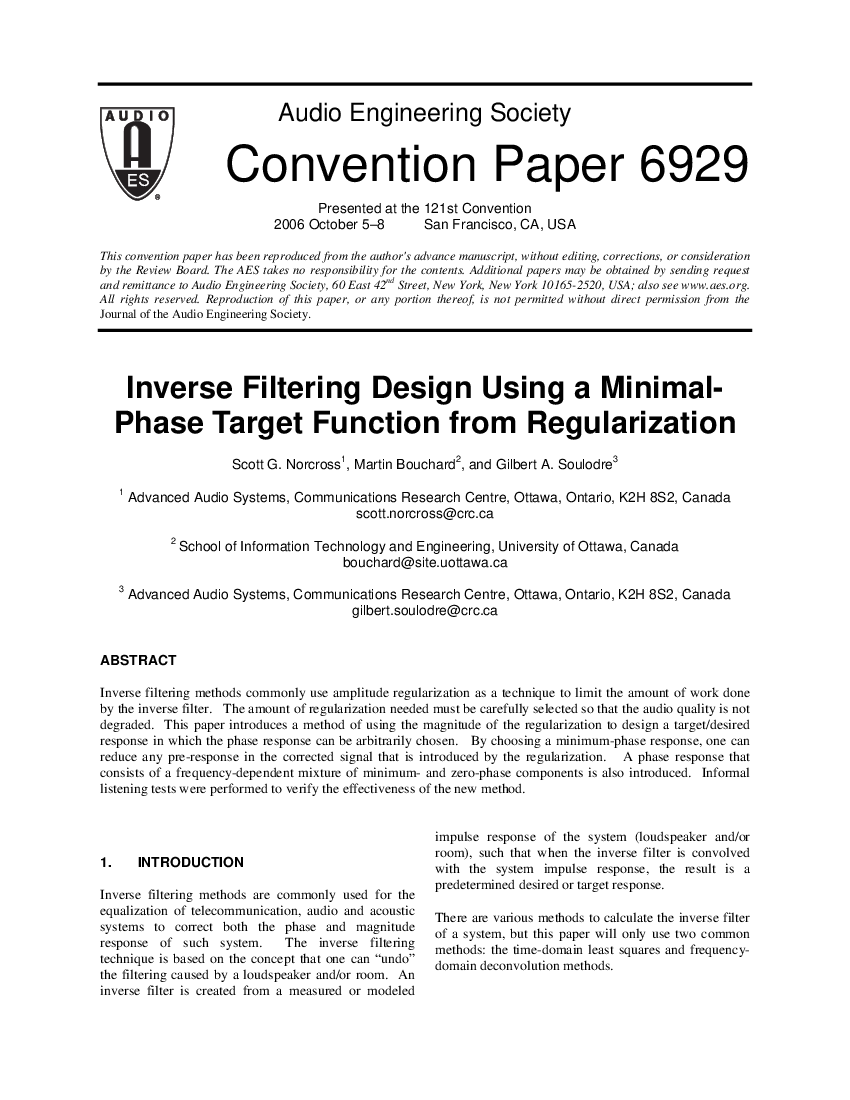Home / Publications / E-library page
You are currently logged in as an
Institutional Subscriber.
If you would like to logout,
please click on the button below.
Home / Publications / E-library page
Only AES members and Institutional Journal Subscribers can download
Inverse filtering methods commonly use amplitude regularization as a technique to limit the amount of work done by the inverse filter. The amount of regularization needed must be carefully selected so that the audio quality is not degraded. This paper introduces a method of using the magnitude of the regularization to design a target/desired response in which the phase response can be arbitrarily chosen. By choosing a minimum-phase response, one can reduce any pre-response in the corrected signal that is introduced by the regularization. Objective measures, such as PEAQ and subjective tests conducted in accordance to the MUSHRA method are used to evaluate the subjective performance of this new approach of designing a target response.
Author (s): Bouchard, Martin; Norcross, Scott G.; Soulodre, Gilbert A.
Affiliation:
CRC; University of Ottawa
(See document for exact affiliation information.)
AES Convention: 121
Paper Number:6929
Publication Date:
2006-10-06
Import into BibTeX
Session subject:
Signal Processing
Permalink: https://aes2.org/publications/elibrary-page/?id=13763
(723KB)
Click to purchase paper as a non-member or login as an AES member. If your company or school subscribes to the E-Library then switch to the institutional version. If you are not an AES member Join the AES. If you need to check your member status, login to the Member Portal.

Bouchard, Martin; Norcross, Scott G.; Soulodre, Gilbert A.; 2006; Inverse Filtering Design Using a Minimal-Phase Target Function from Regularization [PDF]; CRC; University of Ottawa; Paper 6929; Available from: https://aes2.org/publications/elibrary-page/?id=13763
Bouchard, Martin; Norcross, Scott G.; Soulodre, Gilbert A.; Inverse Filtering Design Using a Minimal-Phase Target Function from Regularization [PDF]; CRC; University of Ottawa; Paper 6929; 2006 Available: https://aes2.org/publications/elibrary-page/?id=13763
@article{bouchard2006inverse,
author={bouchard martin and norcross scott g. and soulodre gilbert a.},
journal={journal of the audio engineering society},
title={inverse filtering design using a minimal-phase target function from regularization},
year={2006},
number={6929},
month={october},}